Mechanical Performance and Environmental Assessment of Sustainable Concrete Reinforced with Recycled End-of-Life Tyre Fibres
Abstract
1. Introduction
2. Materials
2.1. Components of Concrete Mix
2.2. Characteristics of Recycled Steel Fibres (RSF) and Industrial Steel Fibres (ISF)
- the percentage distribution of the fibre length,
- percentage distribution of the diameters of the fibres,
- percentage distribution of fibre slenderness,
- percentage distribution of the fibre orientation.
2.3. Composition of Concrete Mix
3. Methodology
3.1. Assigning the Rheological Properties of the Concrete Mix
3.2. Tests on Physical and Mechanical Features of Concrete Composites
4. Results
4.1. Analysis of Fibre Distribution in a Cement Matrix
4.2. Tests on the Rheological Properties of the Concrete Mix
4.3. Compressive Strength of Concrete
4.4. Tensile Strength of Concrete
4.5. Adhesion and Abrasion of Concrete Tests
4.6. Comparative Analysis of Energy Consumption and CO2 Emissions of the Production of Concrete Reinforced with ISF and RSF Fibres
5. Discussion
5.1. Impact of RSF Fibre Addition on the Rheological Properties of the Concrete Mix
5.2. Impact of RSF Fibre Addition on Strength Parameters of the Designed Composite
5.3. Impact of RSF Fibre Addition on Adhesion and Abrasion of Concrete
5.4. Environmental Impact of the Production of Concrete Reinforced with ISF and RSF Fibres
6. Conclusions
- The geometric examination of the fibres confirmed that the fibres from the recycling of tyres used for the tests are characterised by varying lengths, diameter, slenderness and shape. Such a mixture can be classified as hybrid fibres, which show higher efficiency in concrete than fibres of the equal length. However, considering the geometrical characteristics of the fibres, is was shown that only about 60% of the RSF fibres in concrete improve the parameters of the composite. This indicates the application of double content of RSF fibres (50 kg/m3) versus ISF fibres (25 kg/m3) in proposed concrete mix.
- The research showed that steel fibres’ addition significantly affects all rheological and mechanical properties of the concrete: its workability (lower), consistency (reduction by one class), air content in the mix, and strength parameters. The addition of steel fibres can enhance concrete performance, especially the compressive strength (by 13.5% for composite modified with ISF fibres and by 22% for concrete modified with RSF fibres). Tensile strength tests carried out by three methods: Brazilian splitting, bending (3-point test), and WST splitting confirmed the increase in tensile strength when modifying concrete with RSF fibres, respectively, by 43%, 30% and 70% in comparison to the average strength of reference concrete without fibres. Moreover, RSF fibres significantly improved the abrasion resistance of the composite (by 42%).
- The calculation of environmental parameters of concrete with RSF fibres showed significantly lower energy consumption (by 31.3%) and lower CO2 emission (by 30.8%) than concrete with ISF fibres due to the energy-consuming production processes of industrial fibres.
Author Contributions
Funding
Institutional Review Board Statement
Informed Consent Statement
Data Availability Statement
Conflicts of Interest
References
- Etrma Statistics—2017. Available online: https://www.etrma.org/wp-content/uploads/2019/11/ELT-Management-Figures-2017-vf.xlsx.pdf (accessed on 15 April 2019).
- Ganjian, E.; Khorami, M.; Maghsoudi, A.A. Scrap−tyre−rubber replacement for aggregate and filler in concrete. Constr. Build. Mater. 2009, 23, 1828–1836. [Google Scholar] [CrossRef]
- Jing, L. A New Composite Slab Using Crushed Waste Tires as Fine Aggregate in Self-Compacting Lightweight Aggregate Concrete. Materials 2020, 13, 2551. [Google Scholar] [CrossRef]
- Gesoglu, M.; Güneyisi, E.; Hansu, O.; İpek, S.; Asaad, D.S. Influence of waste rubber utilization on the fracture and steel–concrete bond strength properties of concrete. Constr. Build. Mater. 2015, 101, 1113–1121. [Google Scholar] [CrossRef]
- Guo, Y.C. Evaluation of properties and performance of rubber-modified concrete for recycling of waste scrap tire. J. Clean. Prod. 2017, 148, 681–689. [Google Scholar] [CrossRef]
- Gupta, T.; Chaudhary, S.; Sharma, R.K. Assessment of mechanical and durability properties of concrete containing waste rubber tire as fine aggregate. Constr. Build. Mater. 2014, 73, 562–574. [Google Scholar] [CrossRef]
- Ho, A.C. Effects of rubber aggregates from grinded used tyres on the concrete resistance to cracking. J. Clean. Prod. 2012, 23, 209–215. [Google Scholar] [CrossRef]
- Xie, J.-h.; Guo, Y.-c.; Liu, L.-s.; Xie, Z.h. Compressive and flexural behaviours of a new steel-fibre-reinforced recycled aggregate concrete with crumb rubber. Constr. Build. Mater. 2015, 79, 263–272. [Google Scholar] [CrossRef]
- Lijuan, L.; Shenghua, R.; Lan, Z. Mechanical properties and constitutive equations of concrete containing a low volume of tire rubber particles. Constr. Build. Mater. 2014, 70, 291–308. [Google Scholar]
- Silva, F.M. Investigation on the properties of concrete tactile paving blocks made with recycled tire rubber. Constr. Build. Mater. 2015, 91, 71–79. [Google Scholar] [CrossRef]
- Busic, R.; Bensic, M.; Milicevic, I.; Strukar, K. Prediction Models for the Mechanical Properties of Self-Compacting Concrete with Recycled Rubber and Silica Fume. Materials 2020, 13, 1821. [Google Scholar] [CrossRef]
- Son, K.S.; Hajirasouliha, I.; Pilakoutas, K. Strength and deformability of waste tyre rubber-filled reinforced concrete columns. Constr. Build. Mater. 2011, 25, 218–226. [Google Scholar] [CrossRef]
- Noaman, A.T.; Abu bakar, B.H.; Akil, H.M. Experimental investigation on compression toughness of rubberized steel fibre concrete. Constr. Build. Mater. 2016, 115, 163–170. [Google Scholar] [CrossRef]
- Thomas, B.S.; Gupta, R.C. Long term behaviour of cement concrete containing discarded tire rubber. J. Clean. Prod. 2015, 102, 78–87. [Google Scholar] [CrossRef]
- Turatsinze, A.; Bonnet, S.; Granju, J.-L. Mechanical characterisation of cement–based mortar incorporating rubber aggregates from recycled worn tyres. Build. Environ. 2005, 40, 221–226. [Google Scholar] [CrossRef]
- Naaman, A.E. Tensile Strain-Hardening FRC Composites: Historical Evolution since the 1960. In Advances in Construction Materials; Grosse, C.U., Ed.; Springer: Berlin/Heidelberg, Germany, 2007; pp. 181–202. [Google Scholar] [CrossRef]
- Labib, W.; Eden, N. An investigation into the use of fibres in concrete industrial ground-floor slabs. In Proceedings International Postgraduate Research Conference in the Built and Human Environment; University of Salford: Salford, UK, 2006; pp. 466–477. [Google Scholar]
- Naaman, A.E. High Performance Fiber Reinforced Composites: Classification and Applications. In Proceedings of the International Workshop “Cement Based Materials and Civil Infrastructure”, Karachi, Pakistan, 10–11 December 2007; pp. 389–401. [Google Scholar]
- Tlemat, H.; Pilakoutas, K.; Neocleous, K. Demonstrating Steel Fibres from Waste Tyres as Reinforcement in Concrete: Material Characterization. In Proceedings of the First International Conference on Innovative Materials and Technologies for Construction and Restoration, Lecce, Italy, 6–9 June 2004; Volume 1, pp. 172–185. [Google Scholar]
- Tlemat, H.; Pilakoutas, K.; Neocleous, K. Design Issues for Concrete Reinforced with Steel Fibres Recovered from Waste Tyres. J. Mater. Civ. Eng. ASCE 2006, 18, 677–685. [Google Scholar]
- Tlemat, H.; Pilakoutas, K.; Neocleous, K. Stress Strain Characteristic of SFRC using Recycled Fibre. Mater. Struct. 2006, 39, 365–377. [Google Scholar] [CrossRef]
- Aiello, M.A. Use of steel fibers recovered from waste tyres as reinforcement in concrete: Pull-out behaviour, compressive and flexural strength. Waste Manag. 2009, 29, 1960–1970. [Google Scholar] [CrossRef]
- Linsberger, H.N.; Tschegg, E.K. Fracture energy determination of concrete with cube specimens. Zem. Beton 1986, 31, 38–40. [Google Scholar]
- Central Statistical Office for the Polish Economy. ISBN 978-83-89641-04-5, Katowice, 2011. Available online: http://stat.gov.pl/cps/rde/xbcr/gus/oz_wskazniki_zrownowazonego_rozwoju_Polski_us_kat.pdf (accessed on 15 April 2019).
- Casanas, V. Energy as Indicator of Environmental Impact on Building Systems. Available online: http://wsb14barcelona.org/programme/pdf_poster/P-029.pdf (accessed on 15 April 2019).
- Glinicki, M.A. Beton ze Zbrojeniem Strukturalnym. In XXV Ogólnopolskie Warsztaty Pracy Projektanta Konstrukcji; 2010; pp. 279–308. Available online: http://www.ippt.pan.pl/Repository/o70.pdf (accessed on 15 April 2019).
- Jamroży, Z. Beton i Jego Technologie; Wydawnictwo Naukowe PWN: Warsaw, Poland, 2005; pp. 415–417. [Google Scholar]
- Zych, T. Współczesny fibrobeton—Możliwość kształtowania elementów konstrukcyjnych i form architektonicznych. Archit. Czas. Tech. 2010, 18, 371–386. [Google Scholar]
- Martinelli, E.; Caggiano, A.; Xargay, H. An experimental study on the post- cracking behaviour of Hybrid Industrial/Recycled Steel Fibre-Reinforced Concrete. Constr. Build. Mater. 2015, 94, 290–298. [Google Scholar] [CrossRef]
- Centonze, G. Concrete Reinforced with Recycled Steel Fibers from End of Life Tires: Mix-Design and Application. Key Eng. Mater. 2016, 711, 224–231. [Google Scholar] [CrossRef]
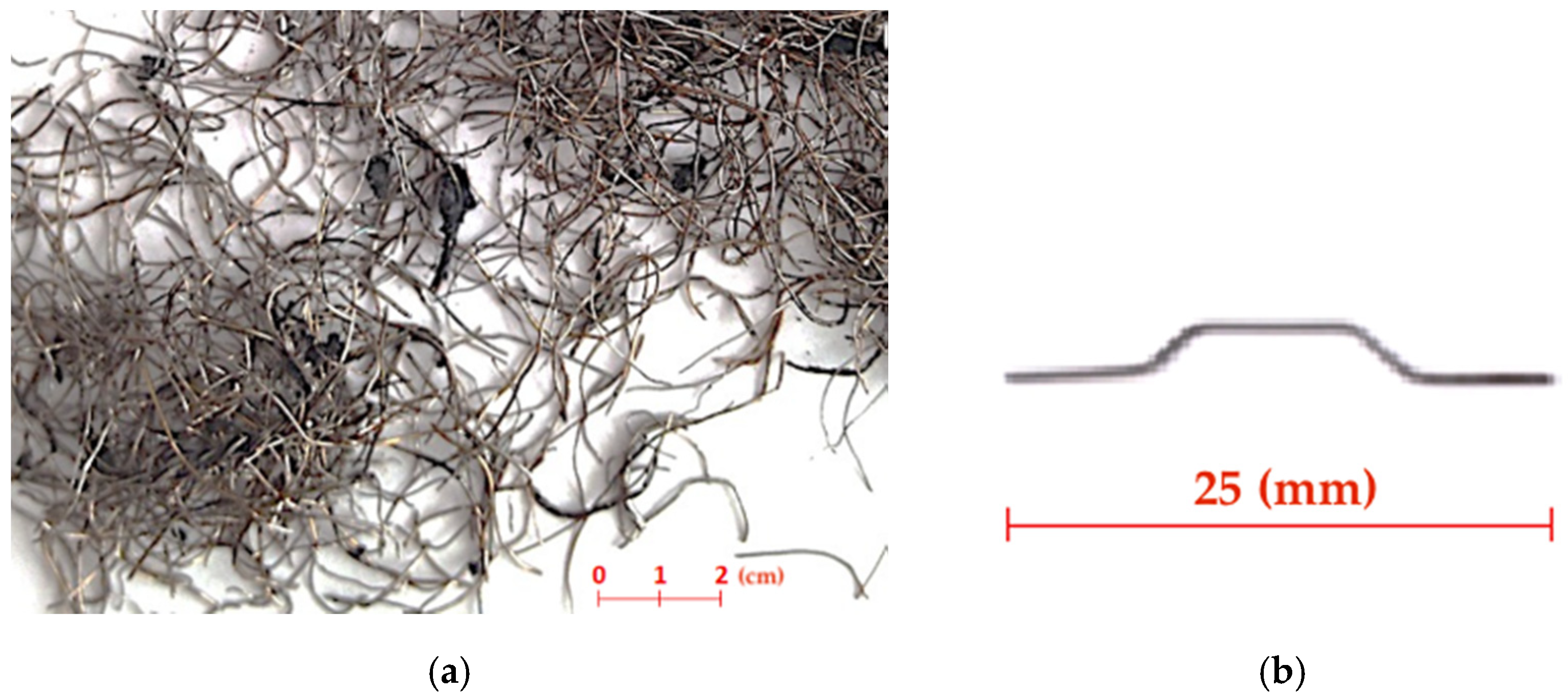
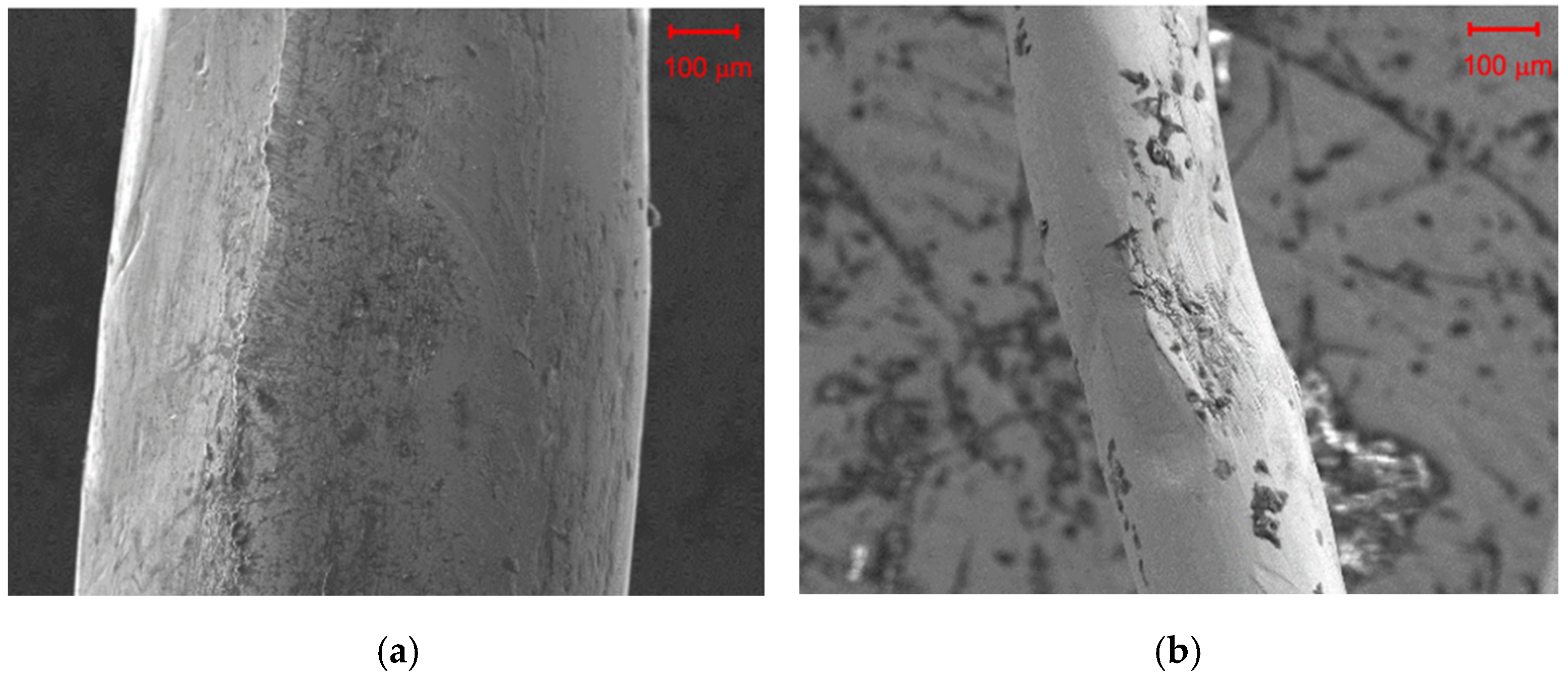



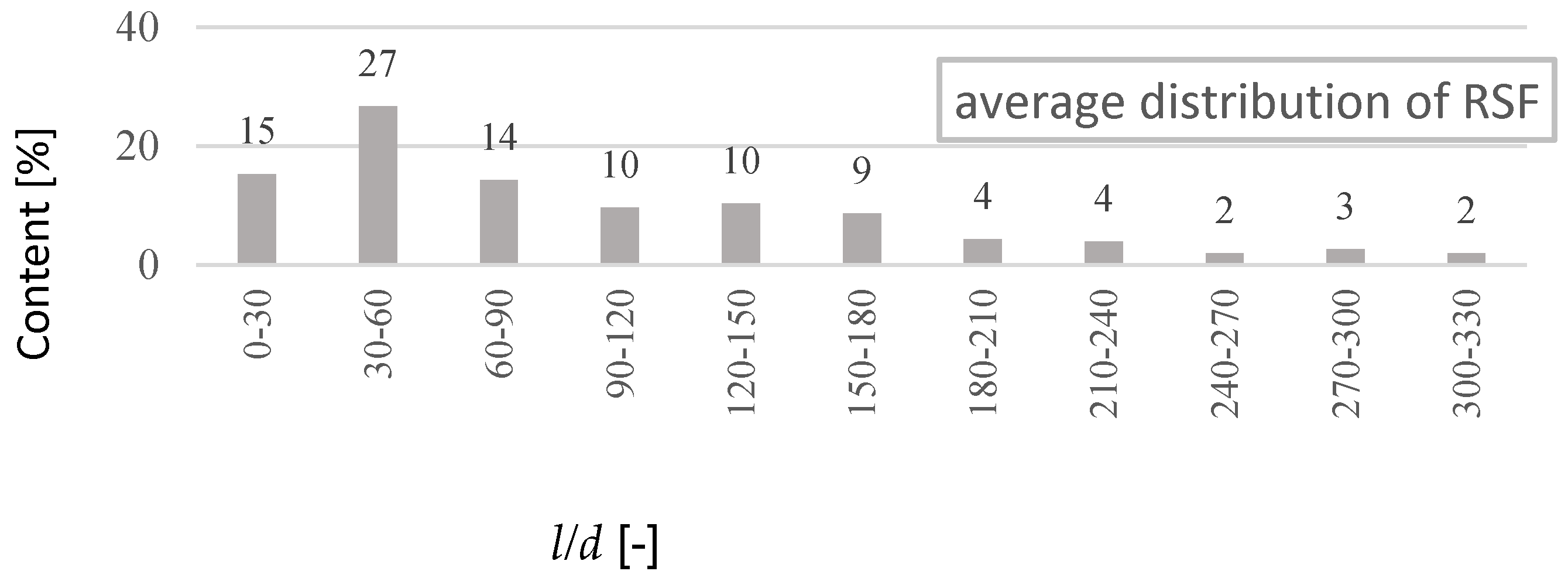
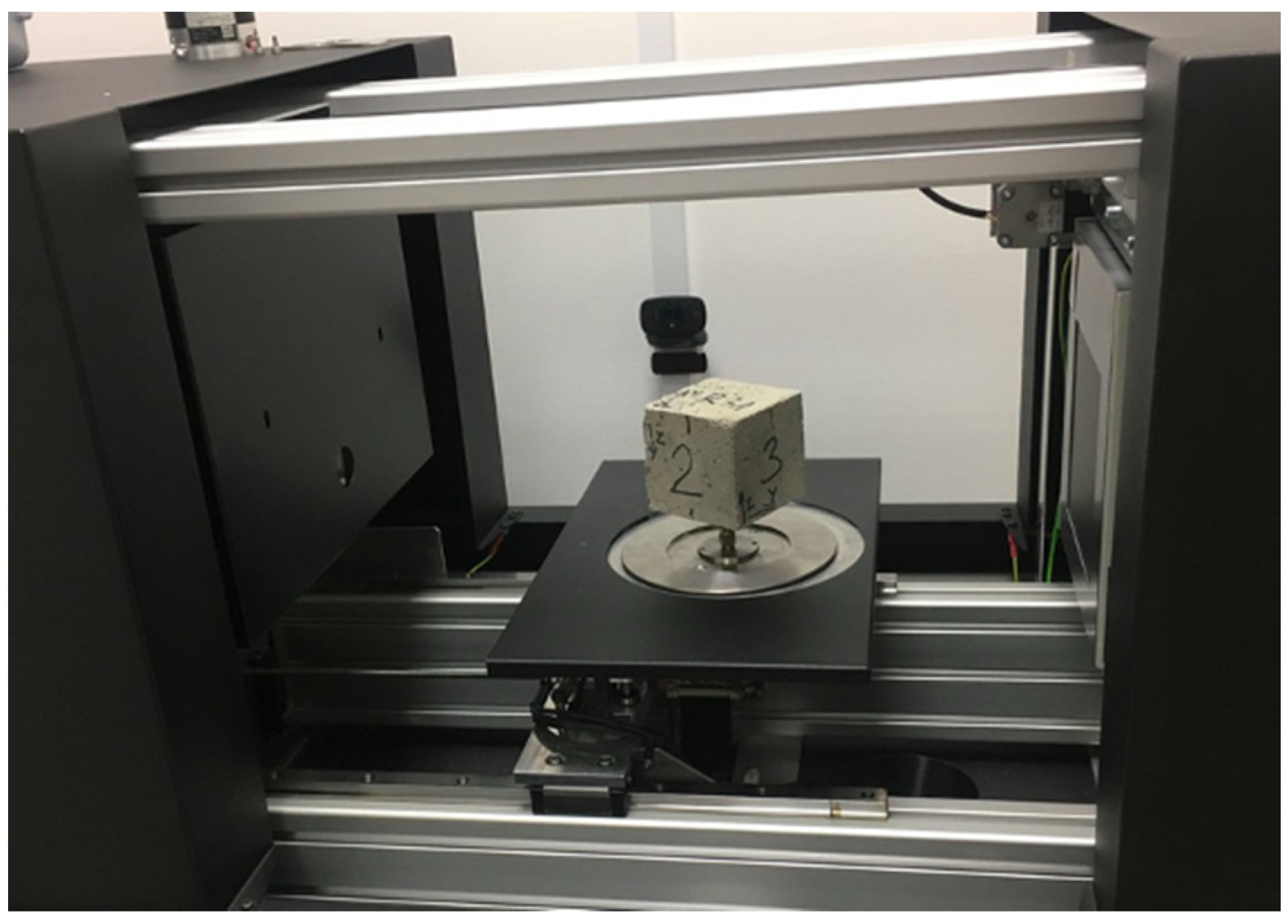
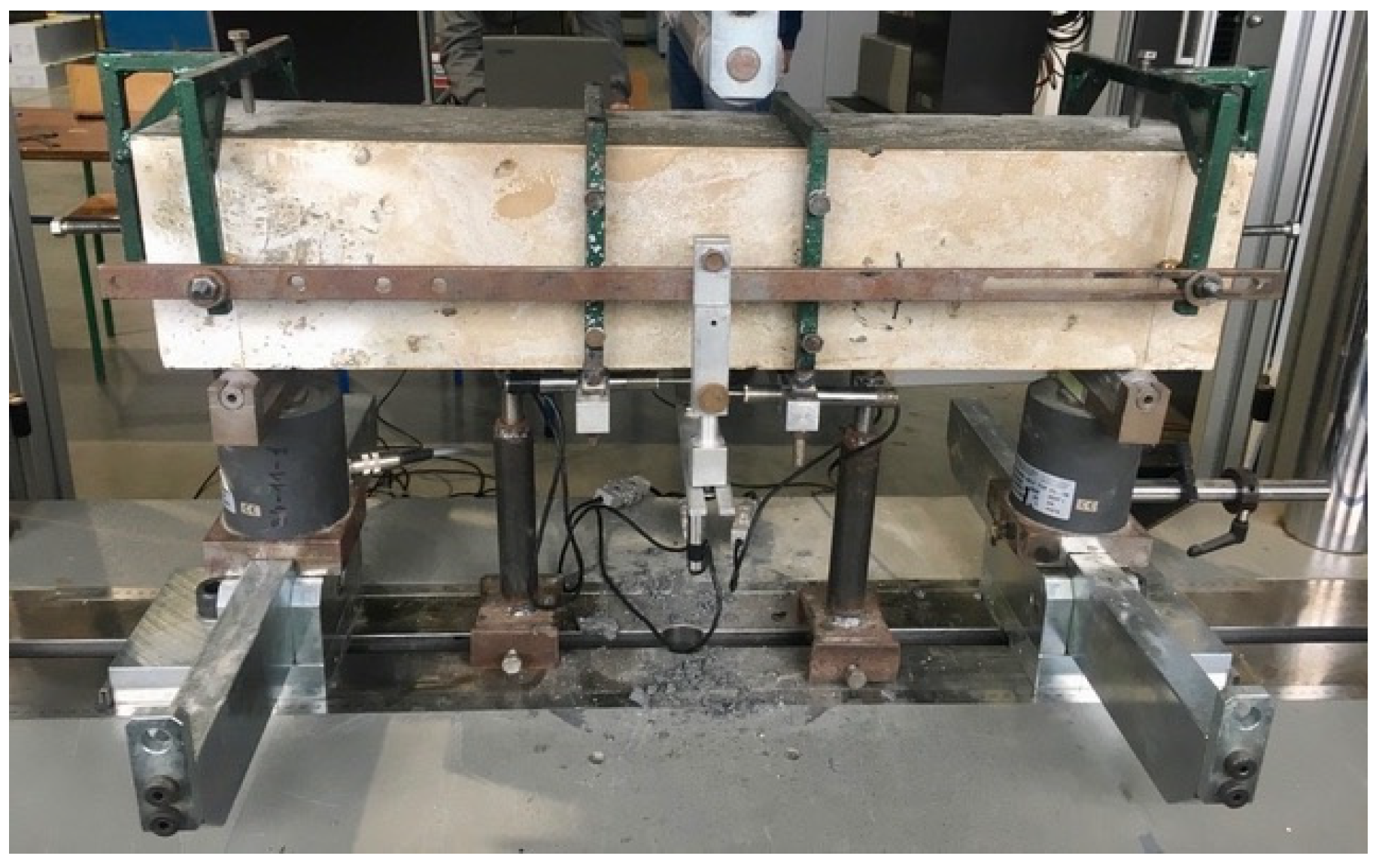
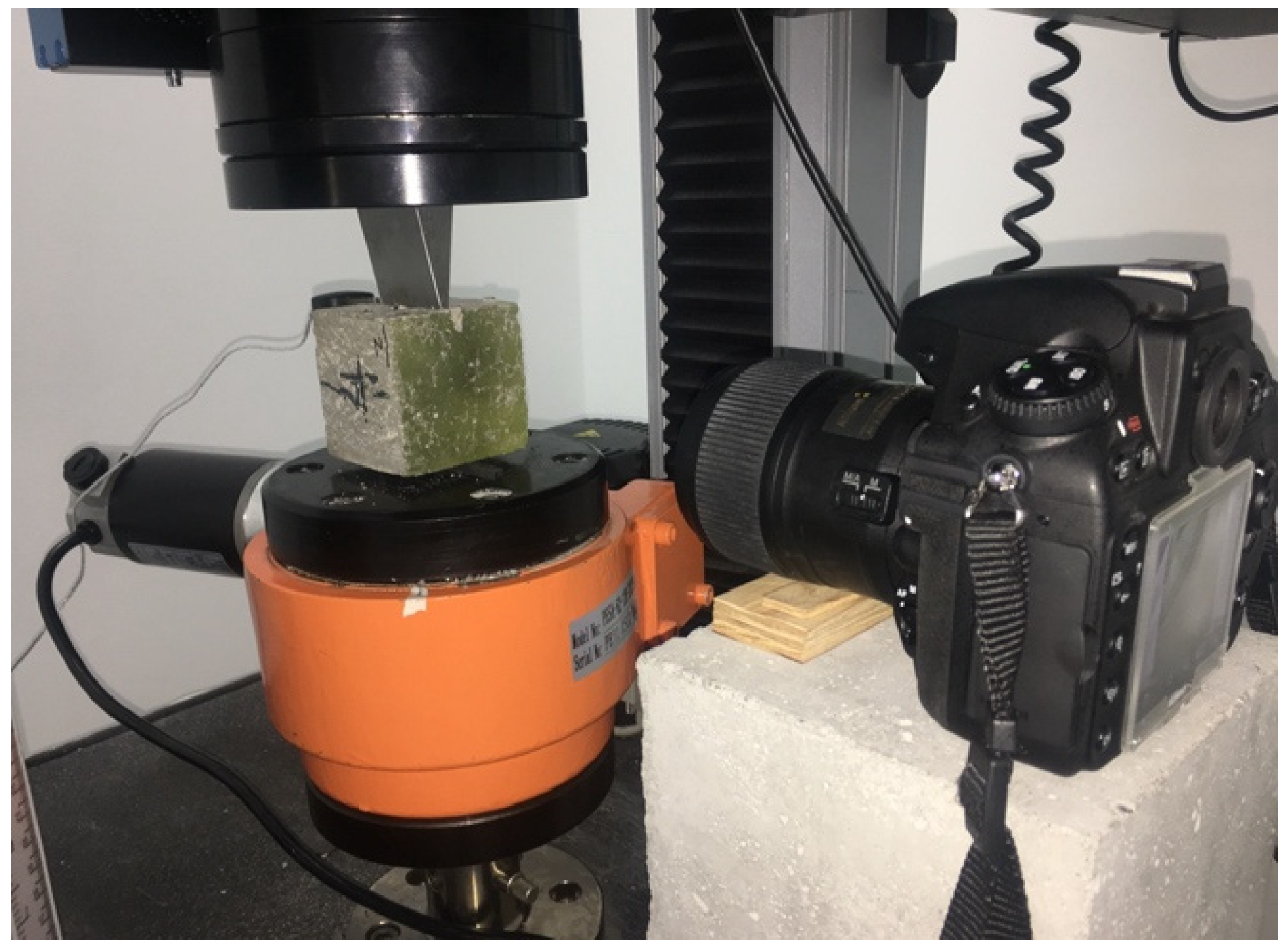
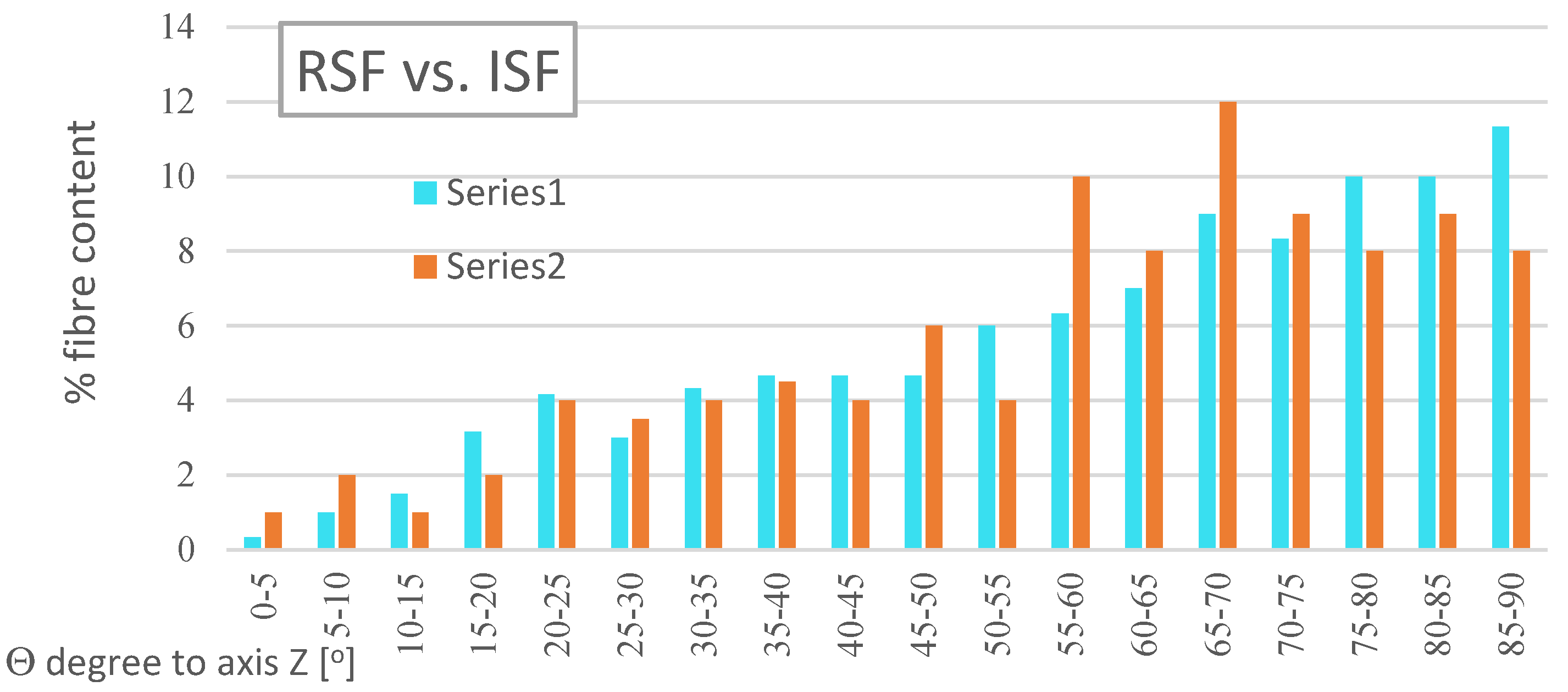
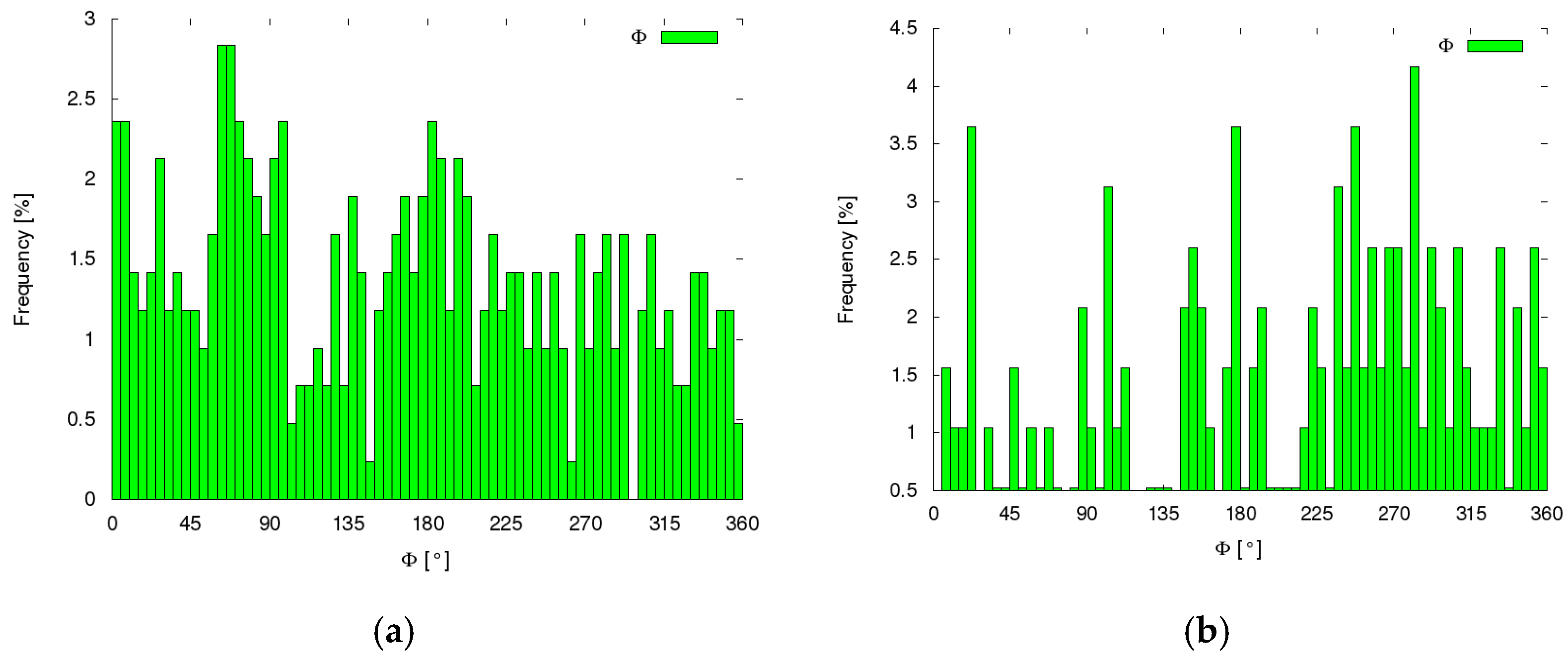
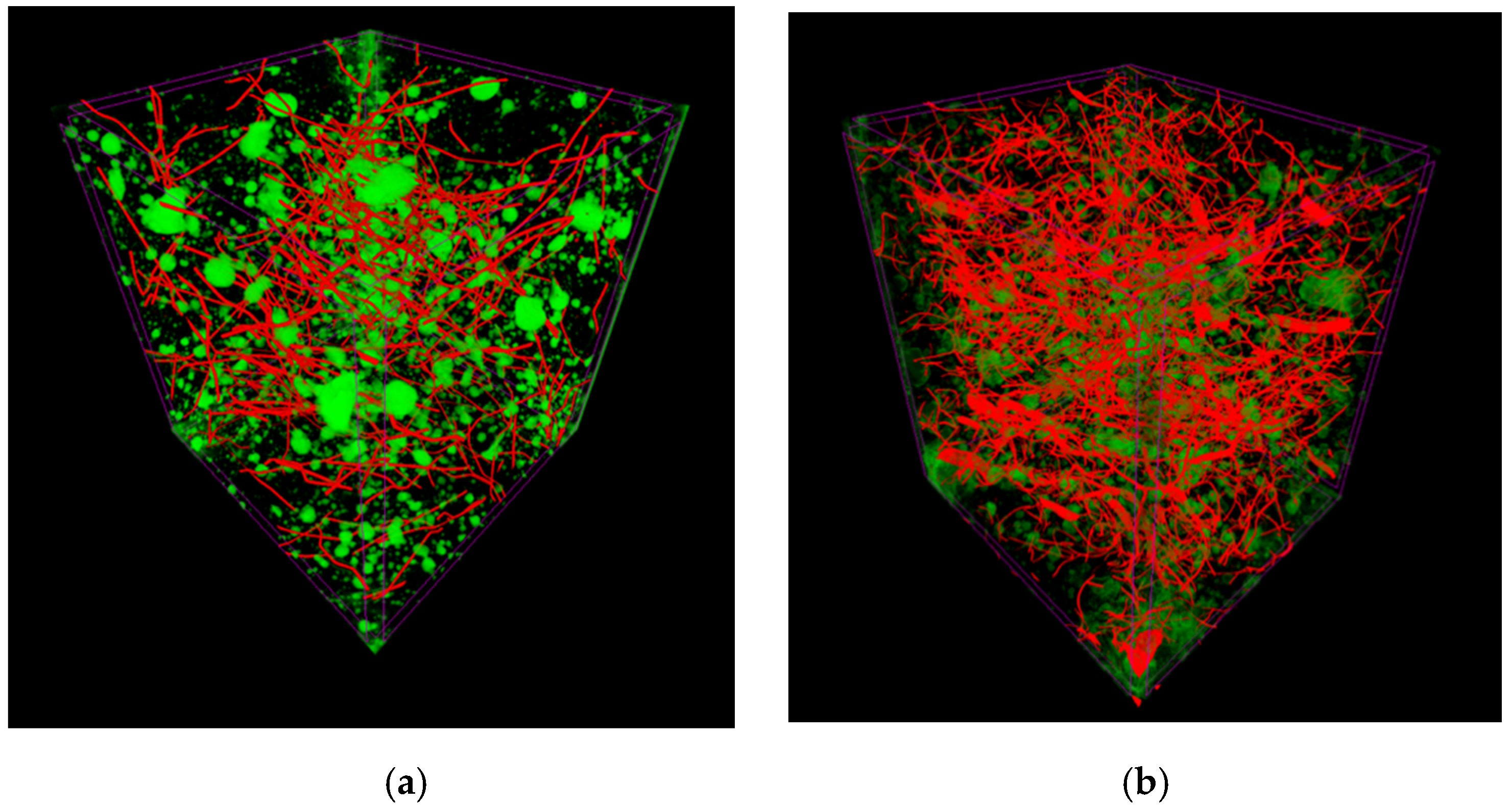
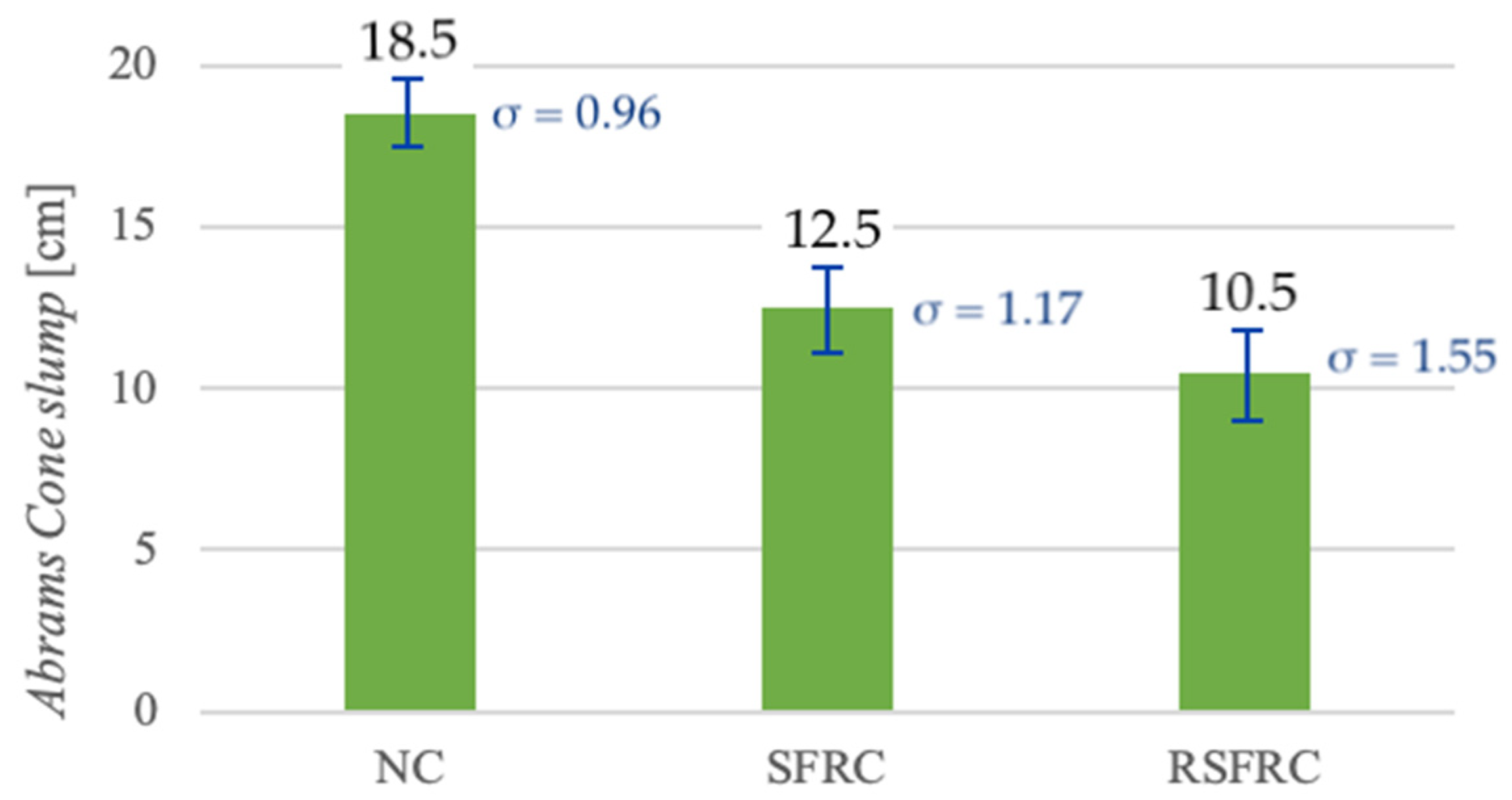
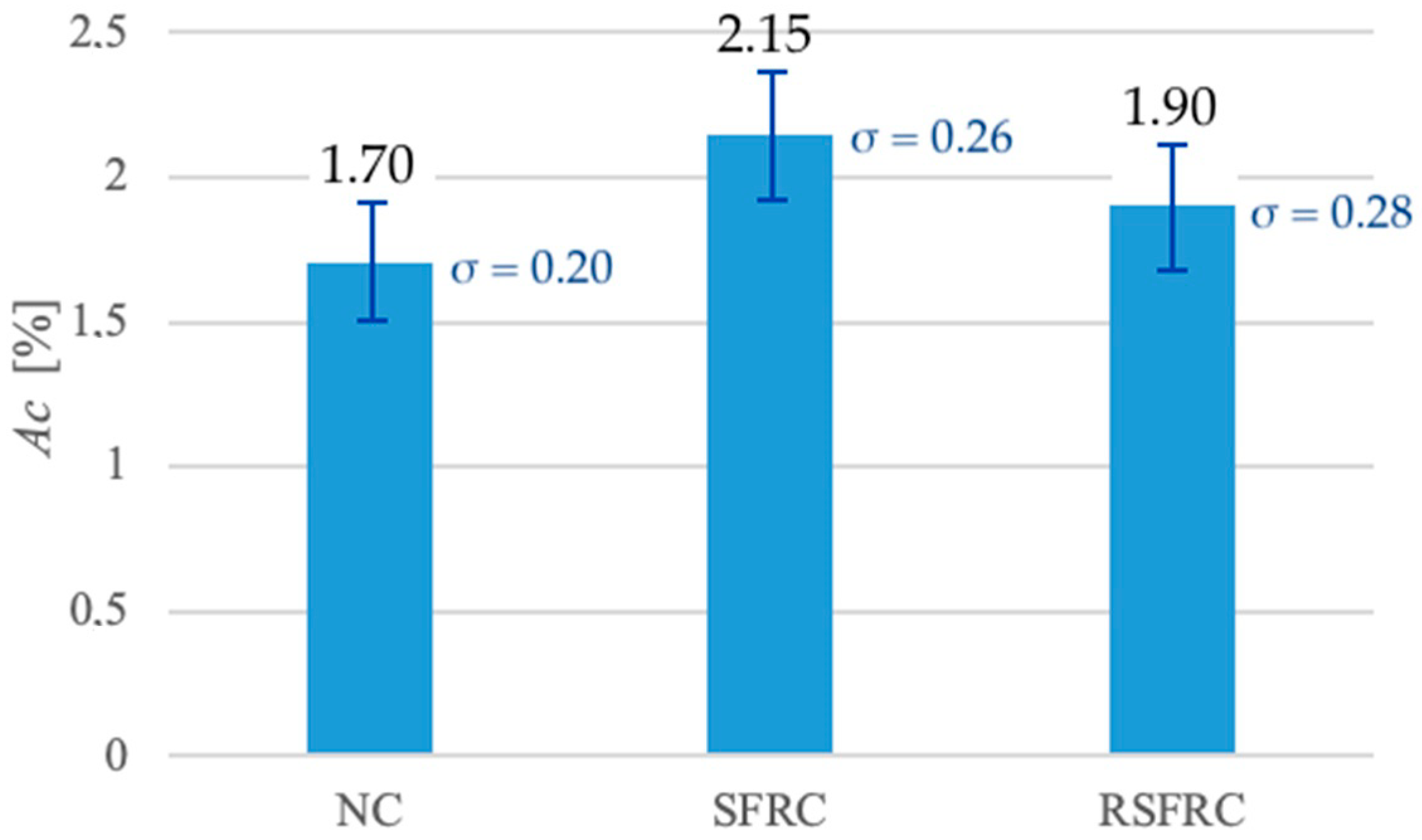
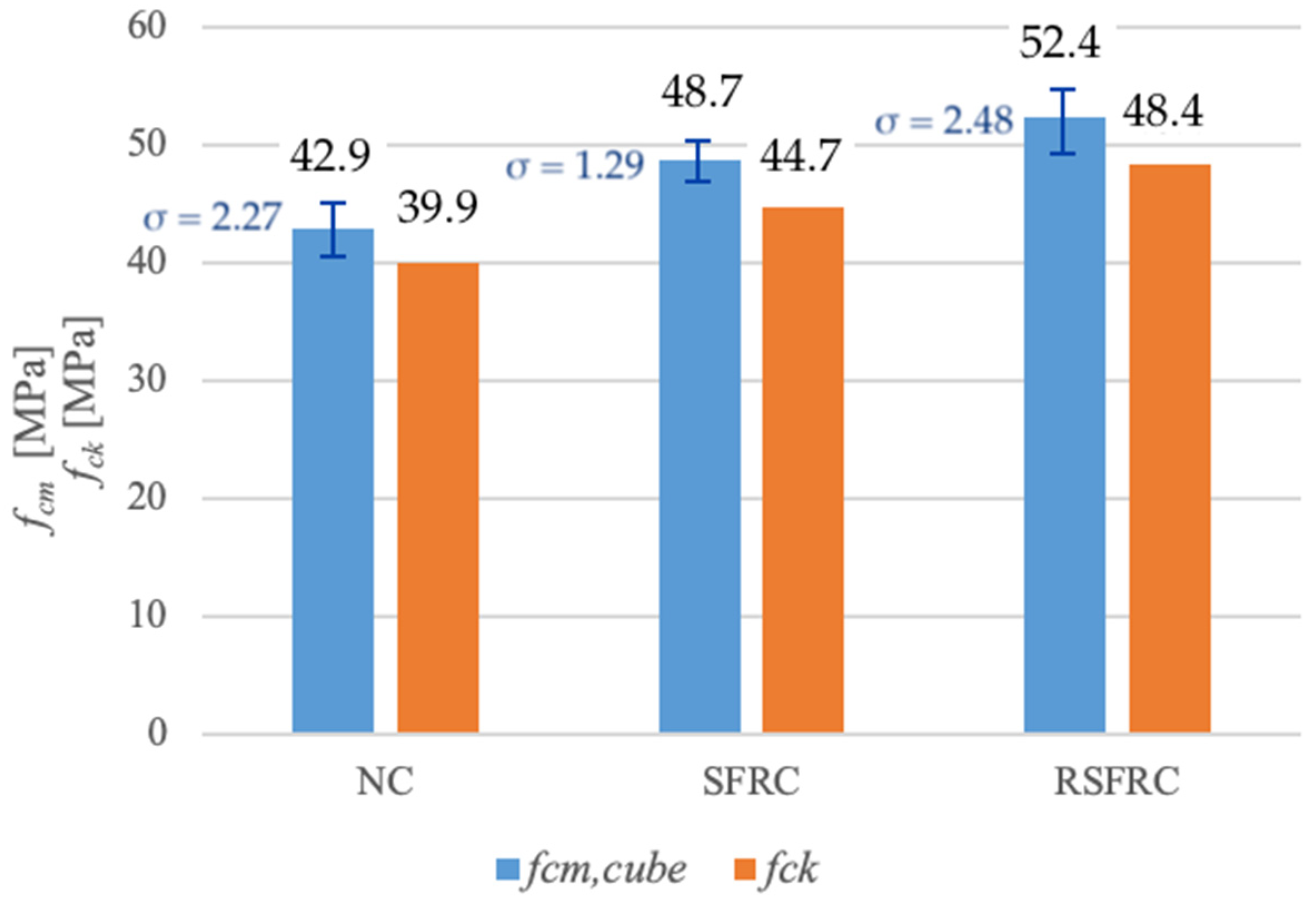
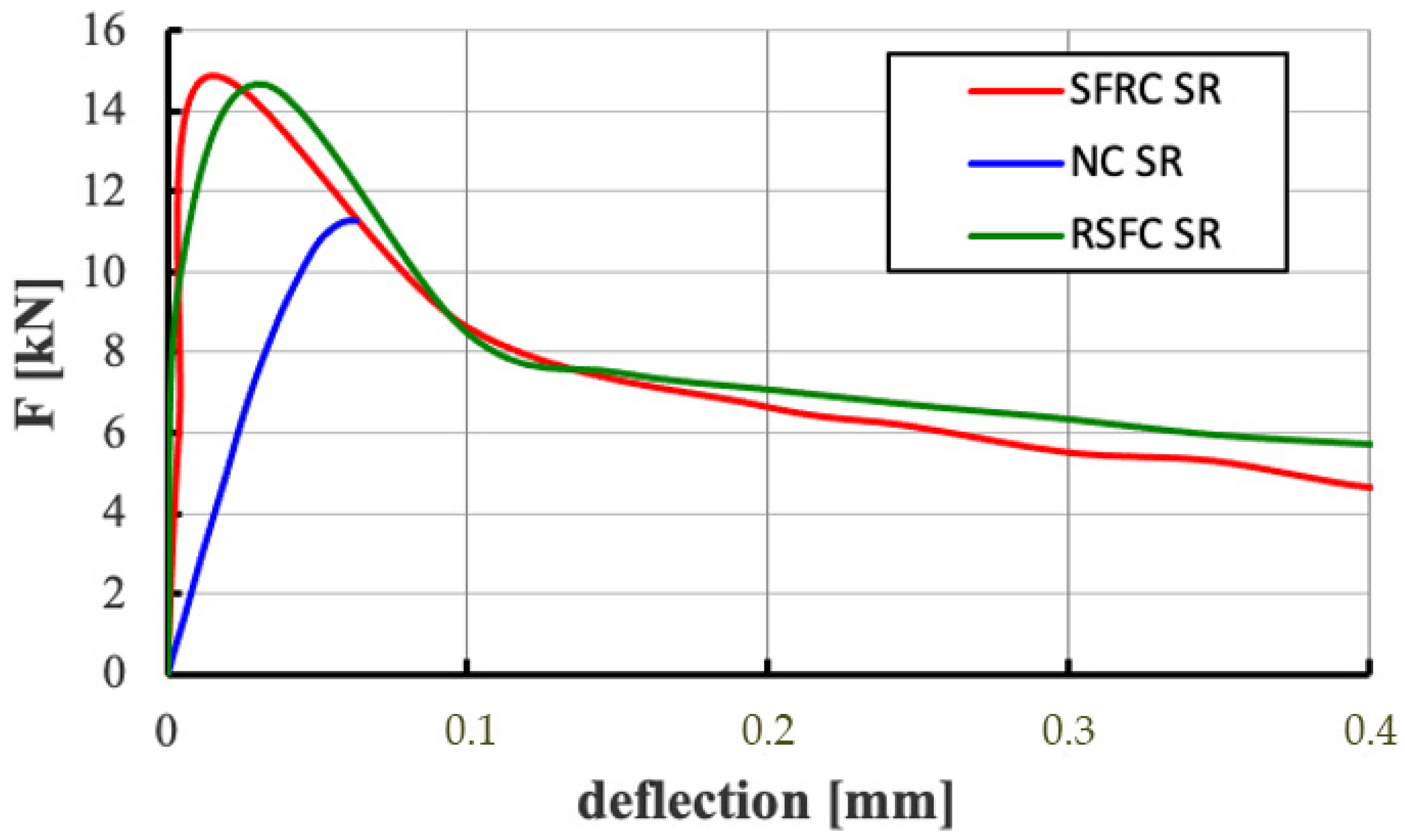


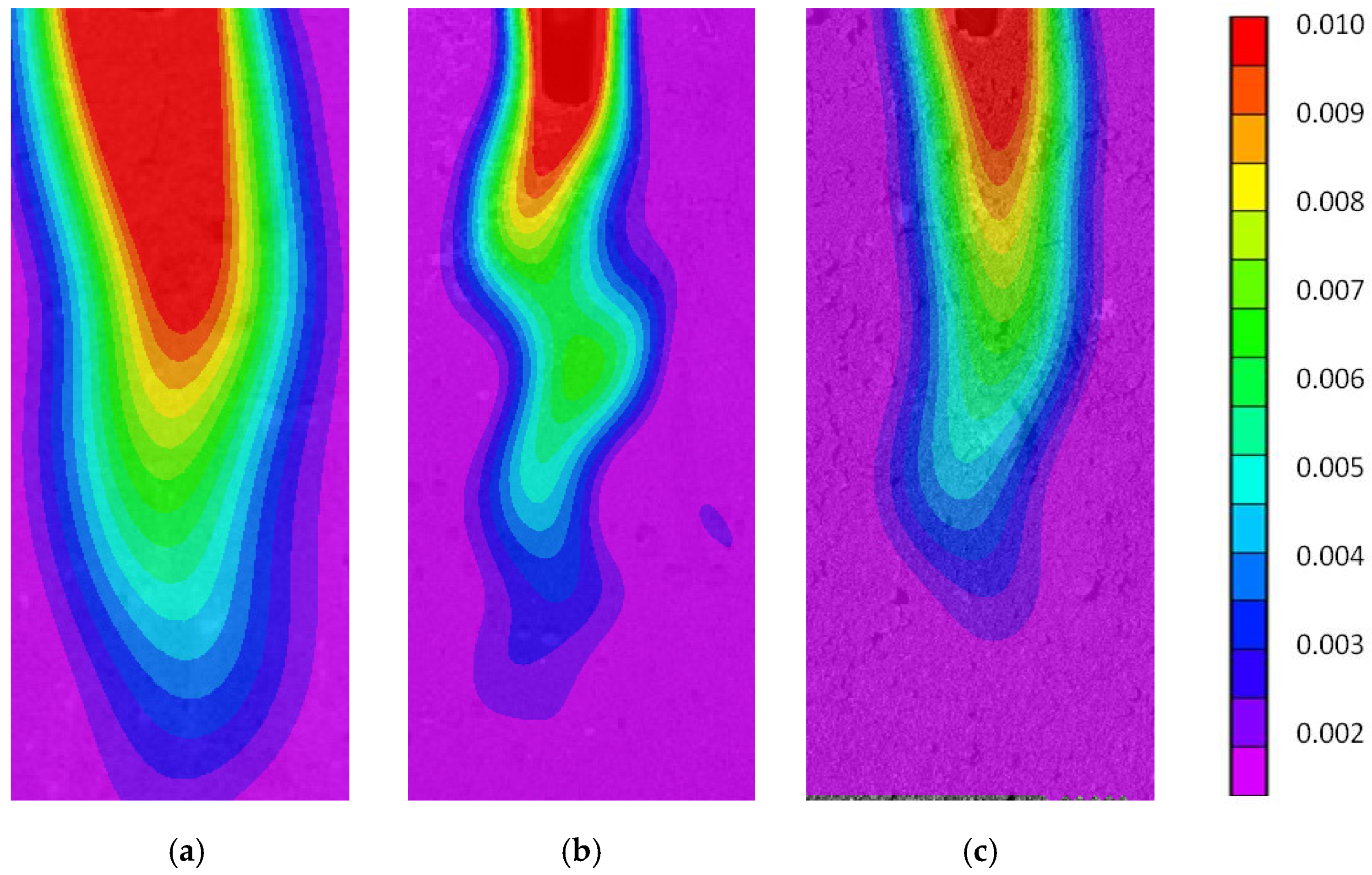

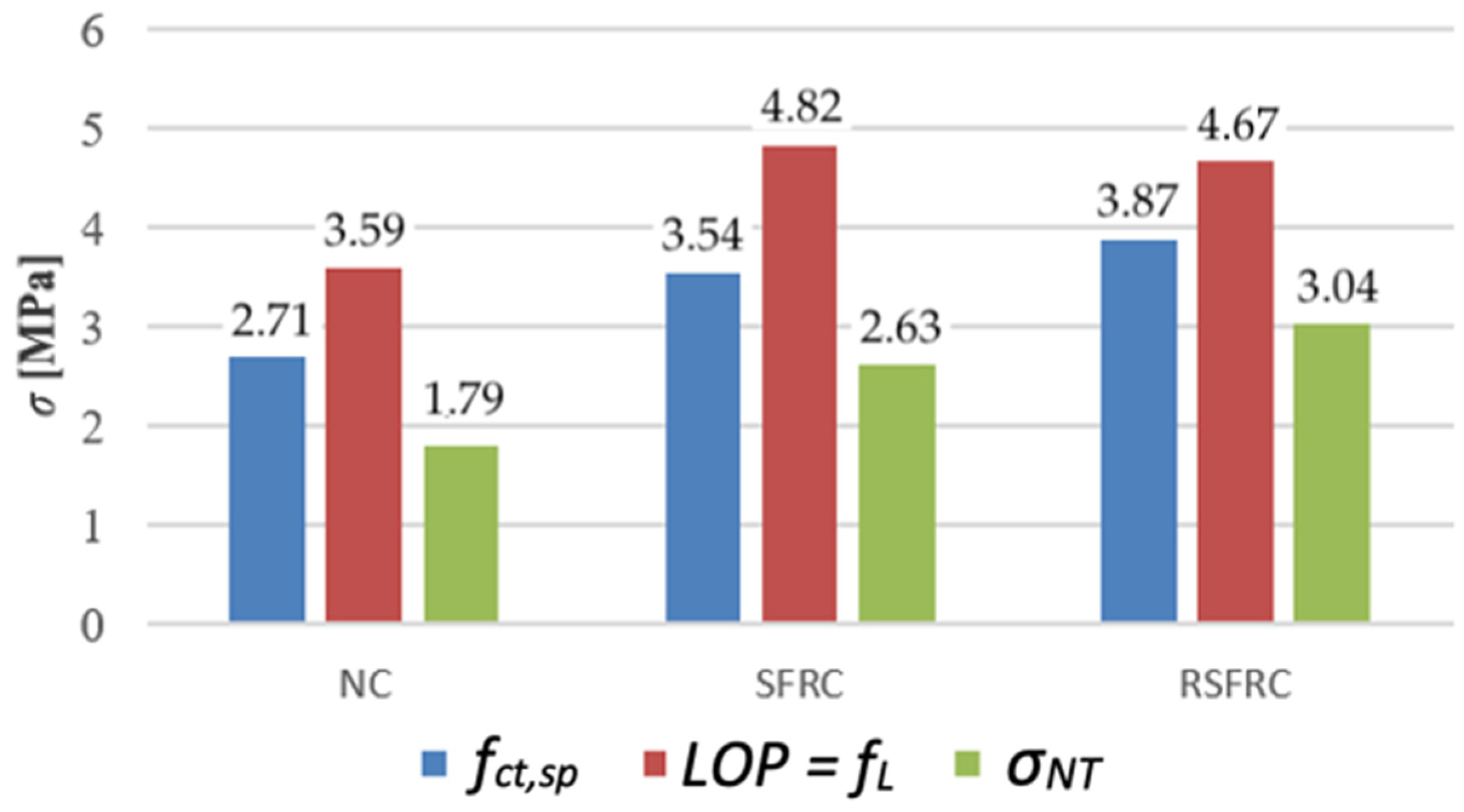

| Characteristics of RSF | Value |
|---|---|
| RSF length (mm) (77%) | 5–30 |
| RSF diameter (mm) (90%) | 0.1–0.4 |
| RSF slenderness | 10–150 |
| RSF figure | irregular |
| RSF tensile strength (MPa) [22] | 2200 |
| RSF density (kg/m3) | 7800 |
| Characteristics of ISF | Value |
|---|---|
| ISF length (mm) (77%) | 25 |
| ISF diameter (mm) (90%) | 0.5 |
| ISF slenderness | 50 |
| ISF Steel type | Group I EN 14889-1:2006 |
| ISF tensile strength (MPa) | 1100 |
| Concrete Mix Composition | NC | SFRC | RSFRC |
|---|---|---|---|
| cement CEM II/B-S 42.5N-NA (kg/m3) | 320 | 320 | 320 |
| sand 0–2 mm (kg/m3) | 457 | 456 | 454 |
| gravel 2–8 mm (kg/m3) | 808 | 805 | 801 |
| gravel 8–16 mm (kg/m3) | 687 | 684 | 681 |
| water (kg/m3) | 160 | 160 | 160 |
| ISF fibres WLS-25/0.5/H (kg/m3) | - | 25 | - |
| RSF fibres (kg/m3) | - | - | 50 |
| superplasticiser (kg/m3) | 3.2 | 3.2 | 3.2 |
| Compression Strength | NC | SFRC | RSFRC |
|---|---|---|---|
| Compression force Fc (kN] | 966 | 1096 | 1179 |
| medium compression strength fcm (MPa) | 42.9 | 48.7 | 52.4 |
| Standard deviation (fcm) (MPa) | 2.27 | 1.29 | 2.48 |
| characteristic compression strength fck (MPa) | 39.9 | 44.7 | 48.4 |
| Class of Concrete | C30/37 | C35/45 | C35/45 |
| - | NC | SFRC | RSFRC |
|---|---|---|---|
| Tensile strength testing for splitting | - | - | - |
| fct,sp (MPa] | 2.71 | 3.54 | 3.87 |
| Increase to NC (%] | - | 31 | 43 |
| Standard deviation (fct,sp) (MPa] | 0.28 | 0.25 | 0.24 |
| Residual tensile strength | |||
| LOP = fL (MPa] | 3.59 | 4.82 | 4.67 |
| Increase to NC (%] | - | 34 | 30 |
| Standard deviation (fL) (MPa] | 0.18 | 0.07 | 0.38 |
| fR1k (MPa] at CMOD1 = 0.5 mm | - | 2.29 | 2.45 |
| fR2k (MPa] at CMOD2 = 1.5 mm | - | 1.15 | 1.66 |
| fR3k (MPa] at CMOD3 = 2.5 mm | - | 0.91 | 1.26 |
| fR4k (MPa] at CMOD4 = 3.5 mm | - | 0.72 | 0.96 |
| fR3k/fR1k > 0.5 | - | 0.4 < 0.5 | 0.51 > 0.5 |
| fR1k/fL > 0.4 | - | 0.47 > 0.4 | 0.53 > 0.4 |
| Tensile strength by WST method | |||
| σNT (MPa] | 1.79 | 2.63 | 3.04 |
| Increase to NC (%] | - | 47 | 70 |
| Adhesion Strength-Pull-Off Test | NC | SFRC | RSFRC |
|---|---|---|---|
| fh (MPa] | 2.50 | 2.45 | 2.49 |
| Standard deviation (fh) | 0.41 | 0.37 | 0.46 |
| Boehme’s Abrasion Resistance | NC | SFRC | RSFRC |
|---|---|---|---|
| ΔV (cm3/50 cm2] | 8.48 | 7.58 | 7.47 |
| Standard deviation (ΔV) | 1.04 | 0.56 | 0.38 |
| Δl (mm] | 1.70 | 1.53 | 1.47 |
| Standard deviation (Δl) | 0.17 | 0.12 | 0.10 |
| Boehme’s abrasion resistance class | A9 | A9 | A9 |
| Concrete Component | Energy Consumption Factor (MJ/kg] | CO2 Emission (kg CO2/kg] | Amount in 1 m3 (kg] | Energy Consumption (MJ] | CO2 Emission (kg CO2] |
|---|---|---|---|---|---|
| cement (kg] | 3 * | 0.3 ** | 320 | 960 | 96 |
| water (dm3] | 0.05 ** | 0 ** | 160 | 8 | 0 |
| sand 0/2 (kg] | 0.1 ** | 0.007 ** | 805 | 80.5 | 5.635 |
| gravel 2/8 (kg] | 0.1 ** | 0.007 ** | 684 | 68.1 | 4.788 |
| gravel 8/16 (kg] | 0.1 ** | 0.007 ** | 454 | 45.6 | 3.192 |
| fibre ISF (kg] | 21.0 *** | 1.95 ** | 25 | 525 | 48.75 |
| SUMA | 1687.5 (MJ] | 158.4 (kg CO2] |
| Concrete Component | Energy Consumption Factor (MJ/kg] | CO2 Emission (kg CO2/kg] | Amount in 1 m3 (kg] | Energy Consumption (MJ] | CO2 Emission (kg CO2] |
|---|---|---|---|---|---|
| cement (kg] | 3 * | 0.3 ** | 320 | 960 | 96 |
| water (dm3] | 0.05 ** | 0 ** | 160 | 8 | 0 |
| sand 0/2 (kg] | 0.1 ** | 0.007 ** | 801 | 80.1 | 5.607 |
| gravel 2/8 (kg] | 0.1 ** | 0.007 ** | 681 | 68.1 | 4.767 |
| gravel 8/16 (kg] | 0.1 ** | 0.007 ** | 454 | 45.4 | 3.178 |
| fibre RSF (kg] | 0 **** | 0 **** | 50 | 0 | 0 |
| SUMA | 1161.6 (MJ] | 109.55 (kg CO2] |
Publisher’s Note: MDPI stays neutral with regard to jurisdictional claims in published maps and institutional affiliations. |
© 2021 by the authors. Licensee MDPI, Basel, Switzerland. This article is an open access article distributed under the terms and conditions of the Creative Commons Attribution (CC BY) license (http://creativecommons.org/licenses/by/4.0/).
Share and Cite
Pawelska-Mazur, M.; Kaszynska, M. Mechanical Performance and Environmental Assessment of Sustainable Concrete Reinforced with Recycled End-of-Life Tyre Fibres. Materials 2021, 14, 256. https://doi.org/10.3390/ma14020256
Pawelska-Mazur M, Kaszynska M. Mechanical Performance and Environmental Assessment of Sustainable Concrete Reinforced with Recycled End-of-Life Tyre Fibres. Materials. 2021; 14(2):256. https://doi.org/10.3390/ma14020256
Chicago/Turabian StylePawelska-Mazur, Magdalena, and Maria Kaszynska. 2021. "Mechanical Performance and Environmental Assessment of Sustainable Concrete Reinforced with Recycled End-of-Life Tyre Fibres" Materials 14, no. 2: 256. https://doi.org/10.3390/ma14020256
APA StylePawelska-Mazur, M., & Kaszynska, M. (2021). Mechanical Performance and Environmental Assessment of Sustainable Concrete Reinforced with Recycled End-of-Life Tyre Fibres. Materials, 14(2), 256. https://doi.org/10.3390/ma14020256






